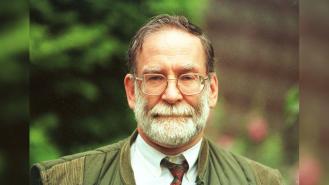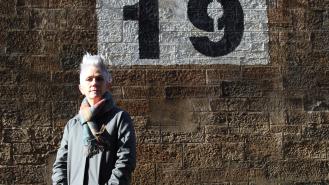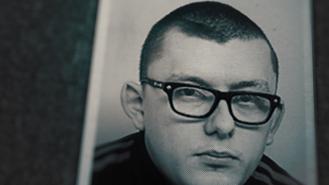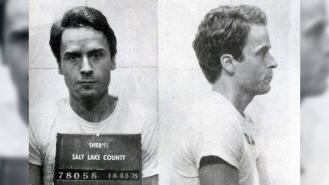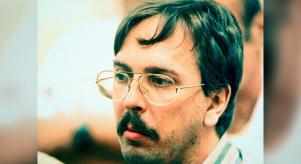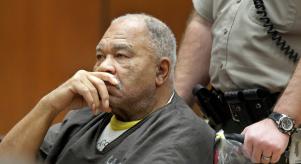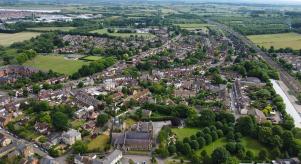
Peter Manuel: 'The beast of Birkenshaw', Glasgow's worst serial killer
Peter Thomas Anthony Manuel was a serial killer who murdered at least seven people across Lanarkshire and southern Scotland between 1956 and 1968. While he remained undetected, he had been dubbed ‘The Beast of Birkenshaw’.
In 1927, Manuel was born in New York City. The son of Scottish parents, the family returned to their homeland when the Depression hit America and they settled down in Birkenshaw, Lanarkshire. (The Daily Record, 24 August 1994 – ‘Peter Manuel Turned Up Tea For Two On The Radio As He Went to the Gallows’) Manuel’s life of crime started when he was just 11-years-old after he was convicted of house-breaking.
By 16-years-old, he was a delinquent, spending years bouncing throughout juvenile detention centres in England. The following year, he attacked a woman in Southport with a hammer. (Liverpool Echo, 11 July 1958 – Questions are Left Unanswered’) Two years later, he was sentenced to eight years in prison for assault and rape.
By the age of 30, Manuel had convictions for burglary, assault, and rape. Once released from prison, he took up a job as a woodcutter. To supplement his income, however, he continued to complete robberies and burglaries.
It is believed that Manuel committed his first murder in January 1956, when he dragged 17-year-old Anne Knelands into a copse and beat her to death with an iron bar. Her body was found on East Kilbridge Golf Course in Lanarkshire. Shortly after the murder, Manuel was seen with fresh scratches on his face.
A couple of months later, he broke into a home in Uddingston and shot Marion Watt, her sister, Margaret Brown, and her 16-year-old daughter, Vivienne Watt. All three victims were killed while they were sleeping. At the time, Marion’s husband, William Watt, was away on a fishing holiday in Lochgilphead.
As the murders were being reported in the media, fear swept across the community, and many parents in the area sent their children to stay with relatives elsewhere. Scouts even ran an escort agency, while teenagers carried knives and scissors as weapons.
There was a sadistic and opportunistic serial killer lurking, and the police’s inability to identify and arrest them led to much public criticism.
In December of the following year, Manuel killed taxi driver, Sydney John Dunn, in Newcastle. Sydney had picked him up as a passenger at Newcastle Central Railway Station. He was found shot dead beside his taxi, which had run off the road into a gully on Muggleswick Moor. (The Birmingham Post and Birmingham Gazette, 30 January 1958 – ‘Man Charged with Murder of Taxi-Driver') His throat had also been slashed. (The Daily Telegraph, 30 January 1958 – ‘Man Accused of Fifth Murder’)
That same month, 17-year-old Isabelle Cooke vanished while on her way to a hockey club dance in Uddingston. (The Birmingham Post and Birmingham Gazette, 17 February 1958 – ‘Manuel on Four More Murder Charges’) Then on New Year’s Day of 1958, Manuel broke into a home in Uddingston where he shot and killed Peter Smart, his wife, Doris, and their ten-year-old son, Michael. Peculiarly, Manuel returned to the crime scene later to feed the family’s cat and eat what remained of their Christmas turkey.
On 14th January, Manuel was finally arrested at his home. Just the day after his arrest, the body of Isabelle was discovered when Manuel led police to the spot where he had buried her in a field. “I think she is here. I think I’m standing on her now,” he told them. (The Atchison Daily Globe, 17 January 1958 – ‘Charged With Slaying Four’)
Manuel was charged with the murders of the Smart family and Isabelle. As Manuel was led to court to be charged, a group of people gathered outside and hurled abuse. “You devil!”, one woman shouted to Manuel as he was escorted by police into the courtroom. (The North Adams Transcript, 18 January 1958 – ‘Scottish Woodcutter Accused of Slaying Family of Three, Girl’)
Shortly thereafter, Manuel was charged with the murders of Anne, Sydney, Marion, Margaret, and Vivienne. He was ordered to stand trial on eight murder charges on 14th April 1958. His defence attorney, R.J. Docherty, submitted a not guilty plea on his behalf, despite the fact he had already confessed to the murders. (Manchester Evening News, 3 April 1958 – ‘Man Killed Eight People’)
The trial was pushed back until 12th May. It was referred to as ‘The Trial of the Century’ and hundreds of curious onlookers flocked to the courtroom to try and catch a glimpse of the spectacle. By 5am each morning, the public queued all the way around the courthouse, as far as Glasgow Cross.
When the trial opened, Manuel lodged a special defence, and blamed another man for three of the murders. It was the first time in almost 100 years that such a defence was used. Manuel tried to blame William Watt, the husband of Marion and the father of Vivienne, as their killer. (Evening Standard, 12 May 1958 – ‘Husband Killed 3 in Family’) The police already considered William as the main suspect in the murders. He spent two months in prison before Manuel was eventually found to be the killer. (The Sunday Mail, 25 August 1994 – ‘Manuel Wanted Me to Take the Rap’)
In addition to Manuel’s confession, there was a plethora of evidence against him, including items he had stolen from his murder victims.
Halfway through the trial, Manuel fired his defence team and decided instead to conduct his own case, becoming the first person in Scottish history to do so. (Glasgow Times, 27 December 2007 – ‘Peter Manuel: Psychopath Who Brought Terror to West 40 Years On’) The decision was ultimately detrimental to Manuel’s case.
As former defence lawyer, Joe Beltrami later commented: "But my impression was he was displaying too much knowledge of the case to be innocent. That's a common failing among people who defend themselves.” (The Sunday Mail, 26 January 2002 – ‘Real-Life Scottish Crime Story Peter Manuel’)
Peter Manuel was convicted of all the murders except that of Anne Kneilands, despite the fact he confessed to killing her and one of her shoes was found in his possession. Manuel was handed a death sentence, with Judge Lord Cameron describing him as “very bad without being mad”.
On 11th July 1958, 31-year-old Manuel was led to the gallows at Glasgow’s Barlinnie Prison to be hanged. His last meal was fish, chips, tomatoes, and tea. As the noose was looped around his neck, he was asked if he had any final words. Turning to the hangman, he said: “Turn up the radio and I’ll go quietly”.
Moments later, the trapdoor was released and The Beast of Birkenshaw plunged to his death. He was the third-to-last person to be executed in Scotland.
